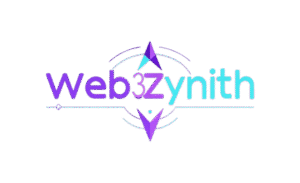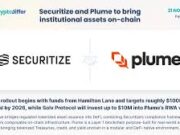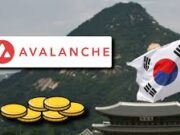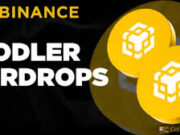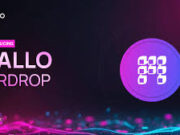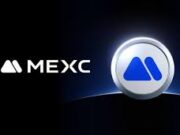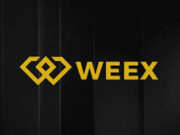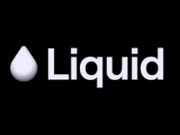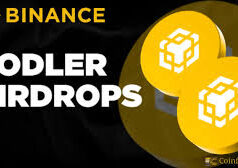Hey crypto crew — if you’re holding BNB (or thinking of it), you know the drill: Binance’s HODLer Airdrops = free token drops for loyalists. And now, the 46th installment is here: Falcon Finance ($FF). This is more than a casual giveaway; it’s a full launch of a protocol aiming to redefine on-chain liquidity using universal collateral. Trading goes live September 29 at 13:00 UTC, with exciting pairs lined up. As someone who’s “farmed” enough airdrops to open a laundry, this one feels serious: stable yields, infrastructure tilt, and high upside. But is FF the next pillar of DeFi — or hype with wings? Let’s break it down, step by step.
1. Binance’s HODLer Airdrops: Loyalty Rewards That Compound
To begin, if you don’t already know: Binance’s HODLer Airdrops program (launched in 2021) rewards BNB holders via periodic snapshots of their holdings, especially when BNB is locked into Simple Earn or On-Chain Yields. Over time, these drops have included gems like Avantis and Hemi, turning passive BNB holders into “free token” recipients.
(Binance)
With Falcom Finance, Binance confirms it’s the 46th HODLer Airdrop project, distributing 150 million FF (1.5% of total supply) to eligible BNB holders.
(Binance)
Pro tip: If you subscribe BNB into Simple Earn (flexible or locked) or On-Chain Yields between Sept 14, 00:00 UTC and Sept 16, 23:59 UTC, you qualify.
(Binance)
While details on snapshot methodology are still light, Binance usually uses hourly or rolling historical snapshots to compute allocations.
(Binance)
2. What Is Falcon Finance? Universal Collateral + Yield Architecture
So what’s behind this hype? Falcon Finance is positioning itself as a universal collateral infrastructure — meaning you can deposit many types of liquid assets (stablecoins, ETH, BTC, altcoins) and mint USDf, an over-collateralized synthetic USD. Then, you stake USDf to create sUSDf, which accrues yield via diversified strategies.
(Falcon Finance)
Unlike simpler synthetic dollar protocols that rely mostly on funding rate arbitrage, Falcon deploys a multi-strategy framework:
- Positive funding arbitrage
- Negative funding arbitrage
- Cross-exchange price arbitrage
- Native staking of altcoins
- Tier-1 liquidity pool strategies
(Falcon Finance)
The aim is to preserve principal while delivering stable returns, even amid market turbulence.
(Falcon Finance)
According to the updated whitepaper, the dual-token model (USDf + sUSDf) enables separation between utility yield and governance functions — with $FF to help decentralize control and drive protocol evolution.
(CryptoSlate)
Additionally, Falcon’s roadmap is ambitious:
- In 2025: Roll out fiat rails across LATAM, Turkey, MENA, US & Europe. (Bitget)
- Also 2025: Launch gold redemption (initially UAE) & tokenized treasury / RWA integration. (Bitget)
- In 2026: Build a full RWA engine to integrate bonds, private credit, and real-world assets. (crypto.news)
This is a heavy pivot toward institutional grade, bridging on-chain yields with traditional finance assets.
(crypto.news)
3. The $FF Token: Governance, Yield, and Utility
At the heart of Falcon lies $FF — the governance token that aims to power protocol decisions, incentives, and yield boosts. The total supply is fixed at 10 billion FF, and about 2.34 billion (23.4%) will be in circulation at listing.
(Binance)
Here’s how the tokenomics break down (per whitepaper / press releases):
- 35% → Ecosystem (airdrops, liquidity mining, RWA pilots, cross-chain growth)
- 32.2% → Foundation treasury
- 20% → Team & contributors (vested)
- 8.3% → Community & launchpad rewards
- 4.5% → Investors
(CryptoSlate)
Holders of FF can vote on: collateral types, yield parameters, protocol upgrades, and more (via the FF Foundation DAO).
(Coin Edition)
Moreover, staking FF unlocks preferential economic perks — e.g., improved minting efficiency for USDf, lower haircuts, reduced swap fees, and yield boosts.
(CryptoSlate)
Deflationary mechanics are baked in too. A portion of fees may go to burns — aiming to maintain or shrink circulating supply over time.
(CryptoSlate)
Interestingly, Falcon’s community sale on Buidlpad was massively oversubscribed. The sale recorded ~$112.8M in commitments, about 28× oversubscription for a $4M raise.
(markets.businessinsider.com)
This level of demand before listing is rare, signaling community confidence (or speculation).
(markets.businessinsider.com)
4. How the Airdrop Works: Steps to Secure Your FF
Let’s get practical—how do you actually earn this airdrop?
- Place BNB in Simple Earn or On-Chain Yields between 2025-09-14 00:00 UTC and 2025-09-16 23:59 UTC.
(Binance) - No special action is needed: Binance will automatically compute snapshots and allocate FF to your Spot Account at least 1 hour before trading begins.
(Binance) - BNB Holding Cap: If your share exceeds 4% of the total average BNB pool, Binance will scale your allocation as though you held only 4%.
(Binance) - Deposits open on 2025-09-26 at 10:00 UTC — that’s when you can send in FF.
(Binance) - Trading opens Sept 29, 13:00 UTC with pairs: FF/USDT, FF/USDC, FF/BNB, FF/FDUSD, FF/TRY.
(Binance)
Because it’s a “Seed Tag” listing, FF is expected to be volatile early, so tread with caution.
(Binance)
5. Why This Could Be a DeFi Inflection Play
Falcon’s differentiator is its universal collateral + yield infrastructure. Rather than letting assets sit idle, your deposited collateral can continuously earn via multiple strategies — even as it backs USDf. This could significantly enhance capital efficiency.
(Falcon Finance)
If the protocol successfully integrates RWAs and bridges fiat rails, it may attract institutional capital, closing the gap between TradFi and DeFi.
(Bitget)
The Buidlpad oversubscription also suggests strong community demand and perceived upside.
(markets.businessinsider.com)
However, timing matters: launching when TVL across DeFi is recovering gives Falcon a runway to capture flows.
(crypto.news)
6. Risks & Watchouts: Don’t Ignore the Clouds
As always, risk lurks:
- Peg risk: synthetic USD systems can break under stress (remember UST). If collaterals slide, USDf may depeg.
- Centralization of Foundation: 32% control is substantial. DAO safeguards might help, but community trust is key.
- Regulation & Jurisdictions: Some users (e.g. in the U.S.) may be excluded. Always check local eligibility.
(Binance) - Competition: Major DeFi primitives (Aave, Compound, Maker) won’t cede ground easily — Falcon must deliver on yield + flexibility.
- Execution risk: Roadmap is aggressive. Delays, security audits, and integrations can falter.
If adoption lags, FF could slump. But if this works, the upside is real.
7. Final Call: To HODL, Stake, or Flip?
Falcon Finance’s $FF is not a meme — it’s a foundational infrastructure bet. With the Binance HODLer airdrop as launchpad and the Sept 29 trading date approaching fast, the runway is set. Personally, I’m staking BNB now, farming up Miles / loyalty points, and prepping for FF exposure.
If you want, I can help you benchmark FF vs other DeFi launches, or even model scenarios (bull, base, bear). What do you want to do next — HODL, stake, or plan your exit strategy?
🔗 External References & Sources
- Binance official announcement for Falcon Finance HODLer Airdrop (Binance)
- Binance listing & deposit details (Binance)
- Falcon Finance architecture & dual-token model explainer (Falcon Finance)
- Press on Buidlpad oversubscription ($112.8M committed) (markets.businessinsider.com)
- Updates on roadmap (fiat rails, gold redemption, RWA plans) (Bitget)
